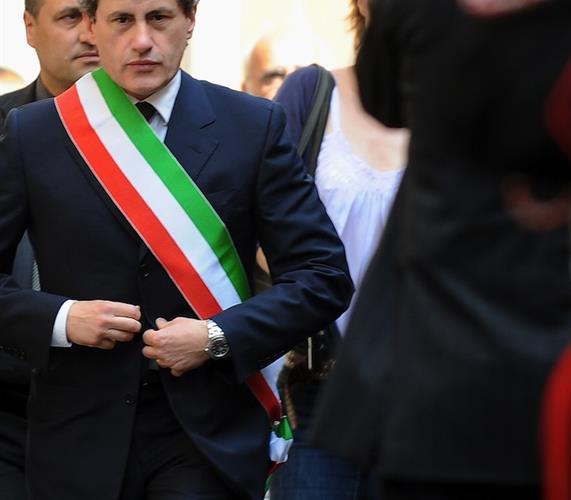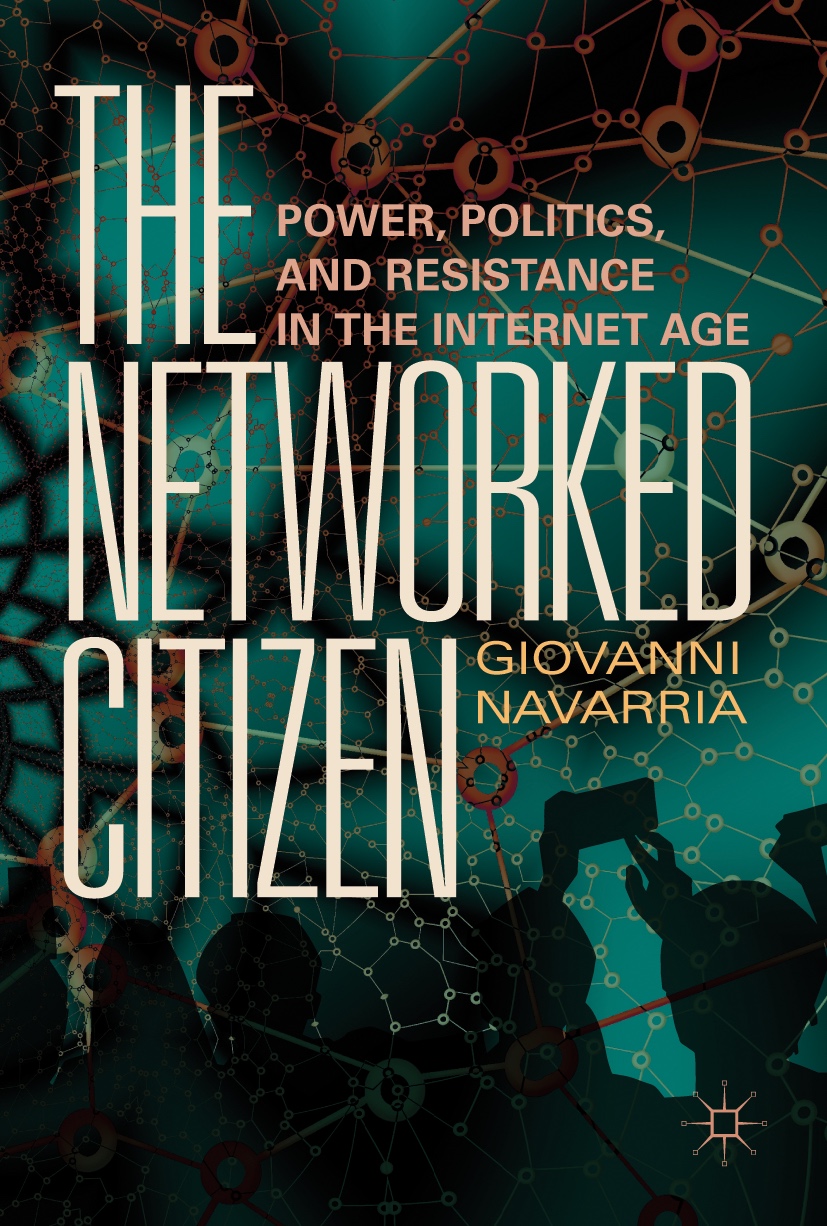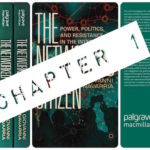Rise and Fall of King Midas
Originally published in The Conversation, October 9, 2016 (link) with the title:
Looking back at 1992: Rise and Fall of King Midas
This article is part of the Democracy Futures series, a joint global initiative with the Sydney Democracy Network. The project aims to stimulate fresh thinking about the many challenges facing democracies in the 21st century.
This essay is the second of a four-part series dedicated to Italy’s recent political history and how much the country has changed since the corruption scandals in 1992. Read the first article here.
—-
The constitutive elements that built the system of Tangentopoli and paved the way for the subsequent rise of Silvio Berlusconi in 1994 did not simply emerge from the corrupted political leadership’s lack of integrity.
Italy 1992 was the product of several different factors, three of which definitely warrant a mention: the role of the family, the practice of clientelism, and the politicisation of the media. To a large extent, these three factors still play a significant part in contemporary Italy.
The historical role of the family as the centre of individual lives and interests in Italian society was key in the formation of Tangentopoli’s political system. ‘Strong and cohesive family units’, as the historian Paul Ginsborg reminds us, have the tendency to look after their own interests, hence developing ‘defensive, cynical and even predatory attitudes towards much of the outside world, [and] towards the institutions of the state’. Families often despise public authorities and consider the public sphere simply as a ‘plundering ground’ for their own private interests. Their political choices are not driven by a selfless democratic spirit. They tend to choose what is best for them, for the family over what is best for the many and for the country.
Another important founding element of Italy 1992 was the diffuse political culture of clientelism, that is, as the anthropologist Amalia Signorelli puts it, a well-oiled system ‘of interpersonal relations in which private ties of a kinship, ritual kinship, or friendship type are used inside public structures, with the intent of making public resources serve private ends’.
Clientelism was at the roots of the development of the Sicilian Mafia in the 19th century. And, since the birth of the Republic in 1948, the political class made the Mafia’s peculiar practice of clientelism and corruption the rule of the politics of everyday life of the country, rather than the exception.
By 1992 Italy’s rule of law and political ethics had long been bent to accommodate the will of many patrons and the need of many clients.
 Emulating the modus operandi of Mafia’s dons, Italian politicians and civil servants often acted ‘as a sort of gatekeeper’ of the public good: they were instrumental in allocating favours (such as jobs, contracts, pensions) to ‘clients, friends and relations in return for fidelity, both personal and electoral’, or money.
Emulating the modus operandi of Mafia’s dons, Italian politicians and civil servants often acted ‘as a sort of gatekeeper’ of the public good: they were instrumental in allocating favours (such as jobs, contracts, pensions) to ‘clients, friends and relations in return for fidelity, both personal and electoral’, or money.
Contemporary Italian politics is still fraught with widespread practices of clientelism and nepotism. In 2015, to name just one of the many recent scandals, an investigation of the District Attorney of Rome uncovered a series of irregularities in the employment procedures used by the Mayor Gianni Alemanno (while in office between 2008 and 2013). Soon after being sworn in, Alemanno, a former Ministry of Agriculture in Berlusconi’s cabinet and a proud fascist, with the city’s finances on the cusp of bankruptcy, decided to appoint in various positions, and by direct nomination, a staggering army of 850 people, most of which family members of the mayor or of his allies.
The role of media
The presence of a heavily politicised Public Service Media and the progressive deregulation of the system in the 1980s were also indispensable cogs of the mechanism that sustained both the pre-1992 system and the post-Bribesville Italy.
Berlusconi’s rise to power was firmly anchored in his strategic use of his televisions networks, newspapers, and publishing houses in the pursuit of his own personal agenda. His exploitation of the country’s public service broadcaster, Radiotelevisione Italiana (RAI), was by no means less significant.
During his tenure, Berlusconi virtually controlled all of Italy’s television networks. He owned Mediaset (the largest commercial broadcaster in the country), and, serving as Prime Minister, effectively wielded decisional power over RAI.
Founded (in its current incarnation) in 1954, RAI has developed into a complex state-owned media company comprised of three terrestrial nation-wide networks, along with radio stations and satellite and Internet television. Its main revenue is based on a national TV license fee and is governed by a board of administrators elected by the Parliament and (after the 2015 reform) by the Government.
Historically, RAI’s editorial policy has always reflected the power hierarchies of the political sphere. During the 50s and 60s, it was controlled by the ruling Christian Democracy party, but since the late 70s it has been subject to the so-called system of lottizzazione: the political partition of the public broadcasting system between the major political parties.
The term lottizzazione was originally used to indicate the ‘parcelling out’ of land, but in contemporary Italy it has become ‘shorthand for the way that hiring for executive posts, journalists and producers is determined by the political parties, especially the ruling coalition’.
Before the political earthquake caused by the corruption scandal of Tangentopoli, RAI 1 was usually the media bedrock of the Christian Democrats. After 1994 Berlusconi’s party Forza Italia kept firm control of the network for many years, even when Berlusconi was technically in opposition with the Parliament.
RAI 2, on the other hand, has always been the official mouthpiece for the ‘secular parties’. During the Bettino Craxi era in the 80s it was typically the network of the Socialist party, the Republicans, and the Liberals. During the Berlusconi era it was home to right wing parties such as National Alliance and the Northern League.
RAI 3, then, has always been the defined garrison of the government opposition. For many decades it was represented by the Communist party (historically the second party in the country for number of votes). Nowadays, regardless of which coalition is governing, RAI 3 is allocated to the Democratic Party and other smaller parties that emerged from the post-1989 transformation of the old Communist party.
With Berlusconi in power the practice of lottizzazione continued, albeit in a less democratic fashion. Now the balance often tilted towards Berlusconi’s coalition, while the opposition found itself with less airtime and budget.
So not only did Berlusconi essentially have exclusive access to RAI, he could count also on the support of Mediaset.
During the early 2000s, Mediaset and RAI together accounted, on average, for over 87 percent of the daily share of the entire Italian television audience. This virtual monopoly, coupled with the silencing of the center-left press via means of political and economic pressure, effectively allowed Berlusconi to establish a firm media regime in Italy.
A shiny and smiley regime
The regime was instrumental in distributing wealth, granting favours, and helping secure the career of many working in the media sector (such as journalists, directors, editors, actors and publishers). Those who supported Berlusconi and his allies were rewarded with a steady presence in his Televisions (RAI networks included).
On the other hand, the regime was merciless with those daring to oppose it openly. Yet, it didn’t have much in common with the infamous regimes of the past. It wasn’t Stalinist; nor was it Fascist. The term regime, in fact, should not deceive the reader. Unlike Mussolini’s, Berlusconi’s new type of regime employed a gentler touch. It wasn’t shrouded in darkness. It prided itself on being shiny and smiley, like its leader. It didn’t even need massive public mobilization.
To impose his will, the entrepreneur and his cronies did not need force (certainly not of the kind that requires the use of physical violence). Iron clubs or terror were never part of its repertoire. Foes weren’t sent into exile on prison’s islands, as Fascism did regularly.
Unlike Stalin, Berlusconi’s regime did not need to carry out pogroms. Punishment was sometimes used, but, ironically for such a staunch anti-communist like Berlusconi, the regime’s style was somewhat Maoist. It didn’t need to be too direct. Rather than carrying out extended purges of all dissenting voices, it preferred to ‘educate the many’ by shaming publicly only a handful of opponents. It was more productive to ‘inform’ potential critics that toeing the party line was actually in their careers’ best interest.
The regime appeared to follow mainly one simple rule ‘power does not belong to those who talk on television. It belongs to those who permit you to talk on television.’ (as perfectly put by the talk-show host, Maurizio Costanzo)
The most notorious application of this rule involved two well-known journalists, the late Enzo Biagi and Michele Santoro, and a stand-up comedian, Daniele Luttazzi. Not only did their shows attract millions of viewers every week, but also lucrative sponsors (who preferred spending their advertisement budget with RAI than with Mediaset). And yet, despite being an indisputable source of revenue and high ratings, in 2002, the three were unceremoniously sacked by RAI’s management, only weeks after Berlusconi had publically labelled them ‘criminals’, for using their state-funded shows to criticise openly the government policies and his image. Their dismissal was retribution for covering in their shows the shady roots of Berlusconi’s business empire and fact-checking his many preposterous claims on the eve of the 2001 general election (which Berlusconi won nevertheless).
Throughout this era, Berlusconi actively abused his position to muzzle any attempt at in-depth analysis of a series of judicial investigations that threatened to uncover inconvenient truths about him, his businesses and his questionable lifestyle.
But his grip on media (especially on RAI) was not only useful in silencing dissenting voices; it was chiefly instrumental in manufacturing consent by manipulating information broadcast by mainstream media. It wasn’t just about censorship. Stories were not entirely swept away under the rug. Usually, they appeared on prime time news, but repackaged to make the Prime Minister look good, or blame someone else.
The way in which News programmes dealt with Italy’s state of economy during Berlusconi’s governments is a perfect example of this particular method of tailored broadcast: in 2004, news programmes would still attribute the country’s growing economy crisis to the economic repercussions of the terrorist attacks in New York and Washington in 2001.
A similar approach was used when in the summer of 2009, a professional female escort, Patrizia D’addario revealed that Berlusconi had paid her about 2000 Euros to spend the night with him at Palazzo Grazioli, the Prime Minister’s official institutional residence in Rome. The revelations were part of the corpus body of evidence of a larger investigation of the District Attorney of the city of Bari. Berlusconi, however, was not being investigated. The prosecutors were looking into a case of solicitation of prostitution and illegal drug trafficking connected with susoect irregularities in awarding public contracts in the Italian southern region of Puglia. The investigators came across Berlusconi’s voice by listening to a series of telephone wiretappings of their main suspects .
The story was likely to trigger a government crisis. Berlusconi, then a married man, had built his political victories by also capitalising on the support of the Roman Catholic Church. His political platform openly defended the unity of the family and the ban of immoral sexual behaviour.
Supported by strong credible evidences (pictures, videos, and recording of the voice of Berlusconi taken with a mobile phone inside Palazzo Grazioli) the vast majority of the Italian newspapers such as La Repubblica and Il Corriere della Sera, not controlled by Berlusconi or linked to his allies, gave intense cover to D’Addario’s revelations.
Similarly, most of the international press (such as The New York Times, The Times of London, and the Spanish El Pais) dedicated ample space to the story. Yet, the news went almost unnoticed in the Italian national television networks; and, when reported, the handling of the story was intentionally deceptive.
RAI 1’s evening news programme, for instance, allocated very little time to the story. Instead of opening its broadcast with it, the News editors decided to slot it in between other items. The reporter downplayed the importance of D’Addario’s testimony, while hinting that the whole story was a fabrication of Berlusconi’s adversaries.
Without giving proper context to the story, the piece began directly from Berlusconi’s defence: ‘one more time newspapers are filled with rubbish and lies about me. I will not be influenced by these attacks. And I will continue working, as always, for the good of the country’.
The journalist then continued by parroting Berlusconi’s own words and by using a very dismissive tone. He described the investigation as ‘one of the many … in the Health system’; it was simply about ‘things of ordinary Italian life’; he then briefly mentioned parties in Berlusconi’s villa, but never acknowledged that D’Addario’s allegations directly involved the Prime Minister in the story. He also suggested obliquely that the instigator of the whole affair might have been Massimo D’Alema, one of the historical leaders of the Left, who had hinted to the media some days earlier about a possible political earthquake approaching.
Two members of the opposition were quoted, probably to make the report sound more pluralistic. And then to reinforce the original point, the journalist concluded with two exponents of Berlusconi’s coalition who barked out the party line one more time.
In such kind of regime, information is often twisted by those in power with a candid reassuring smile before an audience of millions, while journalists do not even attempt to mediate or confront the truthfulness of the information given.
For members of Berlusconi’s coalition was normal to exploit RAI news programmes (but also others) to falsely accuse the centre-left coalition of all that was wrong with the country (for instance of causing a 60 Billion Euros deficit in the national budget – as then Finance Minister Giulio Tremonti did).
The system was also instrumental for dictating the Government agenda to the electors/audience. What types of news were important, what needed packaging; what item came first, what came last, was dictated from above.
For the 2001 general election, immigration and criminality, for instance, were two of the key issues of Berlusconi’s platform. In the months preceding the election, Tg5, the primetime evening news programme of Mediaset’s Channel 5, each night compiled a ‘war bulletin’. The programme was filled with numerous images of illegal immigrants’ landings on the cost of Sicily; or with disturbing reports about the rising rate of hideous crimes against middle-class families.
The so-called ‘crime emergency’ was a fixed feature of the evening news before the general election, but it suddenly (almost entirely) disappeared as soon as Berlusconi took office.
The building up of the 2008 general election followed a similar path. Even though Berlusconi was officially the leader of the opposition, therefore supposedly with less clout over RAI’s management, the incumbent government of Prime Minister Romano Prodi was constantly damaged ‘by negative reporting that played up savage crimes allegedly committed by foreigners.’ In fact, contrary to what the Italian media reported daily, ‘Italy’s crime rates [were] below the European average’. Yet, any attempt by Prodi and his cabinet to reassure Italians that crime rates were declining went unheard.
 The regime also worked hard towards demonizing anyone who dared disputing the truthfulness of Berlusconi’s coalition facts. No one was spared. Not only political opponents, but also many of those individuals and institutions that in a democratic environment exist to guarantee justice and fairness fell victim of the system. Day after day, in Berlusconi’s Italy, the term magistrate became synonym of deplorable individuals whose actions were not inspired by the letter of the Law, but by their ideological creed. Judges were portrayed as the ‘metastatic cancer of a democratic society’; the evil demons guilty of attempting to overturn the will of the people by dragging their democratically elected leader, Berlusconi, endlessly and pointlessly from court to court. The judges’ legal rights and duties, let alone the considerable array of evidences to put Berlusconi on trial play no part in the story.
The regime also worked hard towards demonizing anyone who dared disputing the truthfulness of Berlusconi’s coalition facts. No one was spared. Not only political opponents, but also many of those individuals and institutions that in a democratic environment exist to guarantee justice and fairness fell victim of the system. Day after day, in Berlusconi’s Italy, the term magistrate became synonym of deplorable individuals whose actions were not inspired by the letter of the Law, but by their ideological creed. Judges were portrayed as the ‘metastatic cancer of a democratic society’; the evil demons guilty of attempting to overturn the will of the people by dragging their democratically elected leader, Berlusconi, endlessly and pointlessly from court to court. The judges’ legal rights and duties, let alone the considerable array of evidences to put Berlusconi on trial play no part in the story.
During those years, the entrepreneur’s grip on power was so strong that Italy was routinely considered the least democratic country in Europe. In 2006, Freedom House ranked it eightieth in the world, immediately after Tonga and Botswana and just before Antigua and Burkina Faso.
Commenting on Berlusconi’s media monopoly, the late Indro Montanelli – one of the most respected Italian journalists of the twentieth century – remarked bitterly: ‘if Mussolini could have counted on television networks, he would be still around’.
Ciao, Ciao Silvio
That the very same politician who would later claim Clean Hands was a coup orchestrated by communist judges and the finest embodiment of the political archetype the magistrates in Milan had fought against for many years, went on to win three of the six general elections held between 1994 and 2013 was indeed an ironic turn of history.
Portrayed by his own media as a God-send, a saviour against the satanic spectre of ‘kids-eating Communists’, Italy’s very own King Midas, capable of turning everything he touched in gold (even a failing football club like A. C. Milan), but relentlessly attacked by others as being unfit to lead, for years Berlusconi was the expression of a unique – at least for democratic countries – political anomaly: the 1994 election, but more so the 2001 and 2008 victories, concentrated in his hands the power of politics, wealth, and media.
It was a quasi-monopolistic power that he exploited, almost exclusively, to his own advantage. During the years, Berlusconi’s faithful lackeys in Parliament passed numerous laws (for instance, for reducing the statute of limitations on the crimes he was triad for; or for the decriminalization of fraudulent bankruptcy) and used many other legal subterfuges to save him from prison and his empire from financial collapse.
His monopoly of the media, his firm grip on the Parliament, and his wealth kept Berlusconi in power longer than anyone else before him. He still holds the record for the longest serving Prime Minister since Benito Mussolini. Yet he couldn’t hold onto power indefinitely. In 2011, amid a worrying growing debt crisis, he was forced to resign as Prime Minister.
Despite escaping the initial shockwaves of the global economic crisis in 2008, Berlusconi’s leadership had failed to steady Italy’s economy (though the same could not be said about the status of his finally healthy business empire).
He left behind a country whose disease was ‘chronic rather than acute’, as shown by the decade-long insignificant growth of its GDP, barely above 0.25% a year. Only Zimbabwe and Haiti did worse than Italy in the decade to 2010.
Berlusconi’s policies, his monopolistic abuse of the media and his attitude towards the institutions of the state had changed the country radically, but certainly not for the better.












